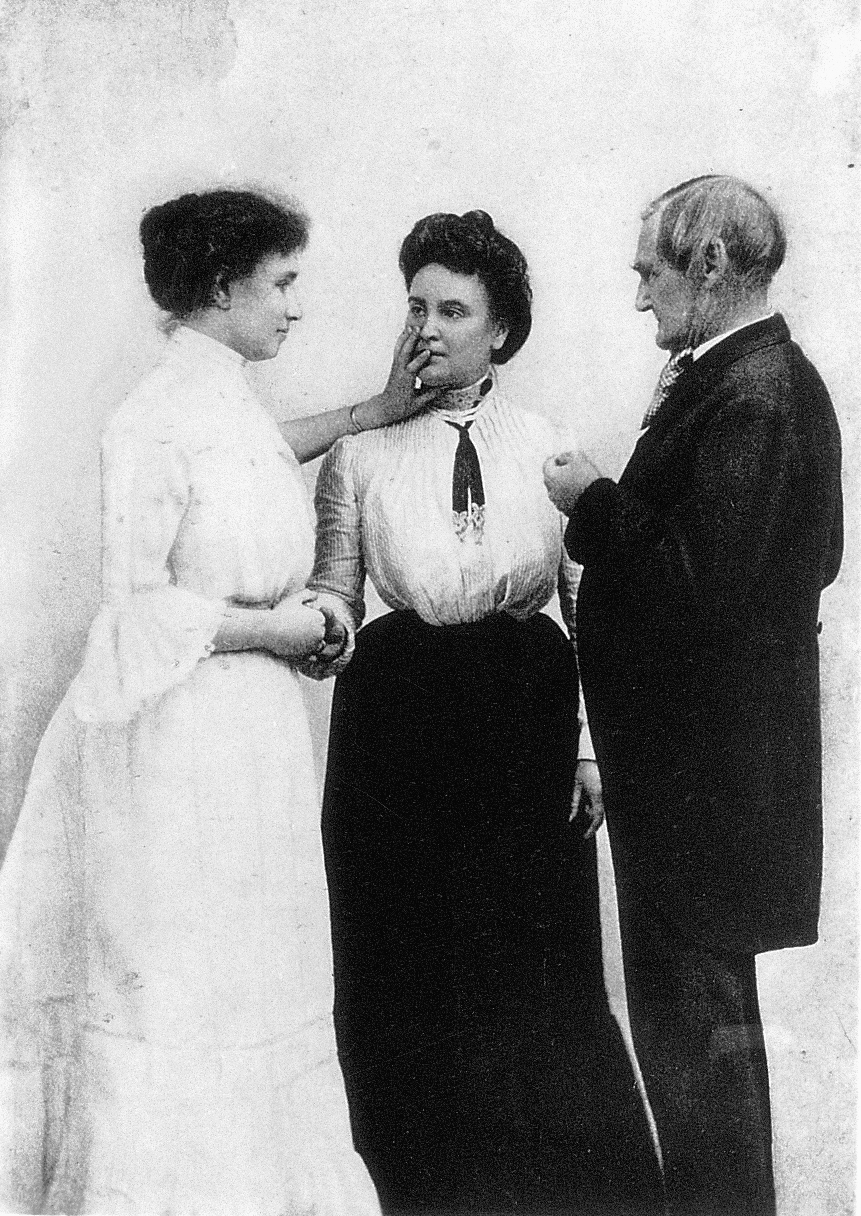Keller, Helen (1880-1968), is an outstanding example of a person who conquered physical disabilities. A serious illness, which her doctor called “acute congestion of the stomach and brain,” destroyed her sight and hearing at the age of about 11/2. Because of this, she could not speak and was entirely shut off from the world. But she rose above her disabilities to gain international fame and to help disabled people live fuller lives.

For almost five years, she grew up, as she later said, “wild and unruly, giggling and chuckling to express pleasure; kicking, scratching, uttering the choked screams of the deaf-mute to indicate the opposite.” Then Helen’s father took her to Alexander Graham Bell. He advised Keller to write to the Perkins Institution for the Blind in Boston (now Perkins School for the Blind in Watertown, Massachusetts). Shortly before the child was 7, Anne Sullivan arrived from Boston to teach her. Sullivan had been nearly blind during childhood, but surgery in 1881 and 1887 partially restored her sight. She later married John A. Macy, but she remained with Helen Keller until her death. Then Mary Agnes “Polly” Thomson, who had been Keller’s secretary, took Sullivan’s place.
She learns to write.
Sullivan was able to make contact with the girl’s mind through the sense of touch. She used a manual alphabet by which she spelled out words on Helen’s hand. Gradually, the child was able to connect words with objects. Once she understood, her progress was rapid. Within three years, she knew the alphabet and could read and write in braille.
She learns to speak.
Until she was 10 years old, Keller could talk only with sign language. She decided she would learn to speak and took lessons from a teacher of the deaf. By the time she was 16, she could communicate well enough to go to preparatory school and to college. She chose Radcliffe, from which she graduated in 1904 with honors. Sullivan stayed with her through these years, interpreting lectures and class discussions for her.
She helps others.
After college, Keller became concerned with the conditions of the blind and the deaf-blind. She became active on the staffs of the American Foundation for the Blind and of the American Foundation for Overseas Blind. She appeared before legislatures, gave lectures, and wrote many books and articles. She started the Helen Keller Endowment Fund and asked for funds from wealthy people.
Keller became especially interested in bettering conditions for the blind in developing and war-ravaged nations. An enthusiastic and untiring traveler, she lectured in their behalf in over 25 nations throughout the world. During World War II (1939-1945), Keller worked with soldiers who had been blinded in the war. Wherever she appeared, she brought new courage to blind people.
Keller received many awards of great distinction. They included the Chevalier’s ribbon of the French Legion of Honor, the Alumni Achievement Award of Radcliffe College, and decorations from many governments.
Keller’s books have been translated into more than 50 languages. They include The Story of My Life (1902); Optimism (1903); The World I Live In (1908); The Song of the Stone Wall (1910); Out of the Dark (1913); My Religion (1929); and Midstream: My Later Life (1930). Teacher (1955) tells of Sullivan. The motion picture Helen Keller in Her Story told the story of Keller’s life. The play The Miracle Worker (1959) and its motion-picture adaptation (1962) described how Sullivan made contact with Keller through the sense of touch. Helen Adams Keller was born on June 27, 1880, in Tuscumbia, Alabama. She died on June 1, 1968.
See also Bridgman, Laura Dewey ; Sullivan, Anne Mansfield .
